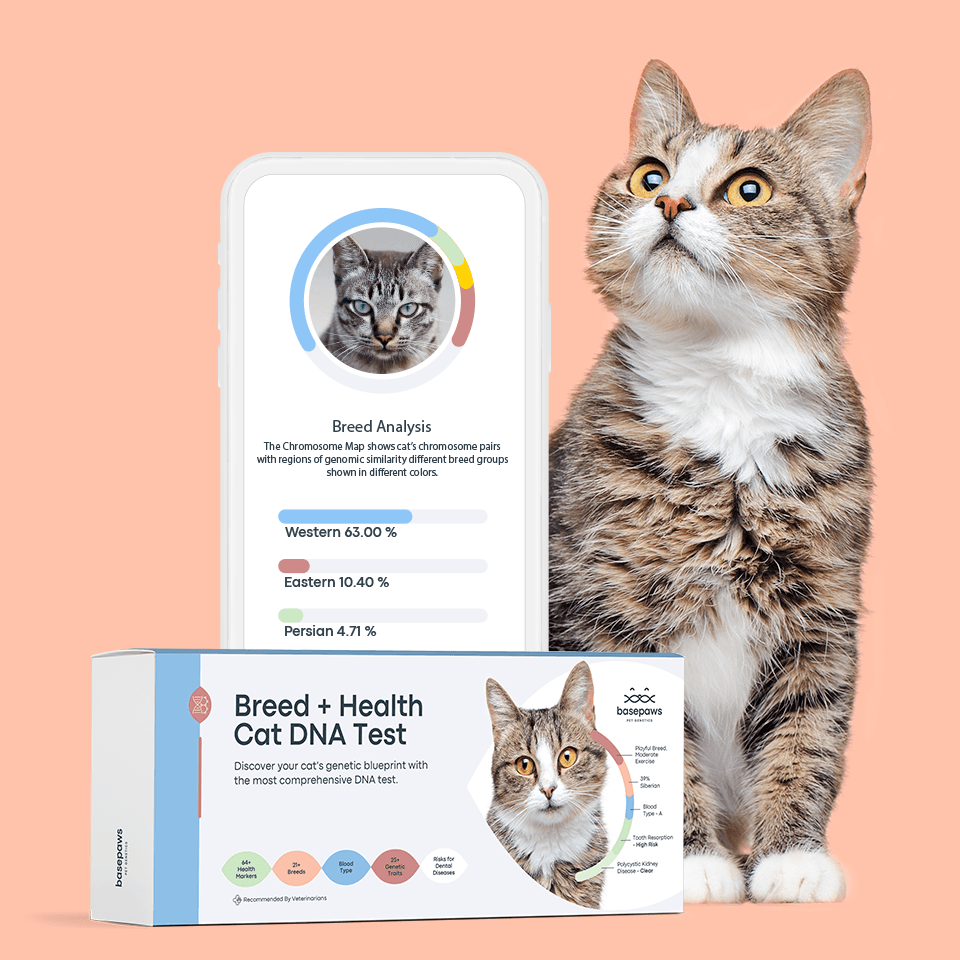Basepaws analyzes this breed as part of a group of other breeds.


Basepaws analyzes this breed as part of a group of other breeds.


Basepaws analyzes this breed as part of a group that also includes German Shepherd.
Despite being distinct in characteristics and origin, some pairs or groups of breeds lack the number of genetic differences required to distinguish these populations from one another, particularly when only a subset of these differences are inherited by a mixed breed dog. As we continue to expand our breed database, we aim to increase the resolution of our ancestry algorithm such that differentiating between increasingly specific ancestral sources becomes possible.

The German Shepherd breed originated in Germany in the late 19th century, where it was initially used for herding and guarding sheep. The breed was established by Captain Max von Stephanitz, a German cavalry officer who sought to create an ideal working dog that would also be highly adaptable. The breed's traits were solidified through controlled breeding practices, with an emphasis on working abilities rather than appearance. He took various strains of German herding dogs from northern and central districts and crossed them; this resulted in ancestors of the German Shepherd we know today. Though the breed was originally made to herd sheep, their stealth, agility, intelligence and speed have made them the ideal and preferred K-9 police and military dog. The breed now holds many jobs including guide dog, explosive and narcotics detection dog, guard dog, and search-and-rescue dog (among others).
German Shepherds can suffer from elbow and hip dysplasia, degenerative myelopathy, cardiomyopathy, panosteitis, hemangiosarcoma, cauda equina syndrome (CES), von Willebrand Disease, malignant neoplasms, skin allergies, pannus, gastric torsion, bloat, perianal fistulas, and cataracts. They may also be affected by Canine Scott Syndrome, leukocyte adhesion deficiency (type III), pituitary dwarfism, renal cystadenocarcinoma and nodular dermatofibrosis, rod-cone degeneration, hemophilia A (type 1 and type 2), hyperuricosuria, multidrug resistance 1, chondrodystrophy (with or without chondrodysplasia), X-linked ectodermal dysplasia, and mucopolysaccharidosis VII. This breed is also prone to a fatal Aspergillus fungal infection.
German Shepherds are known for their intelligence, loyalty, and versatility. They have a confident and courageous personality and can be protective of their family, making them effective guard dogs. They require lots of mental stimulation and physical exercise, and without proper training and socialization, they can develop behavioral issues.
A canine genetic lineage is a group of individuals or entire breeds that descended from common ancestors predating modern breed formation. Often these lineages are associated with a ‘type’ of dog with a unique historical working role and associated behaviors (e.g., herding, scent hunting, etc.).
Herding dogs are known for their high intelligence, trainability, and strong work ethic. These breeds originated in areas where managing livestock was an important part of daily life and had large pastoral lands. These breeds were specifically developed to help farmers and shepherds move, manage, and protect herds of livestock. Breeds within the herding dog lineage are agile and are known to have a natural herding instinct, where they like to keep their animals together. They are loyal and attentive to their handlers and are eager to please and are also highly aware of their environment. Many breeds within this linage have gone on to work as rescue and police dogs.
Example breeds with ancestry from this lineage include Border Collie, Cardigan Welsh Corgi, and German Shepherd.
During World War I, the American Kennel Club (AKC) changed the name from German Shepherd to Shepherd Dog, and the British started referring to them as Alsatians, due to the anti-German sentiment of the time.
German Shepherds are the second most popular breed in the U.S., according to the AKC.
They are often used in roles such as search and rescue, police and military roles, and disability assistance.
A German Shepherd named Rin Tin Tin was one of Hollywood's first canine stars.
https://www.akc.org/dog-breeds/german-shepherd-dog/ https://www.fci.be/Nomenclature/Standards/166g01-en.pdf https://www.ukcdogs.com/german-shepherd-dog
https://www.petmd.com/dog/breeds/c_dg_german_shepherd
https://www.pawprintgenetics.com/products/breeds/133/
Recommended by top vets with decades of experience
21 breeds
64 genetic health markers
50 genetic trait markers
